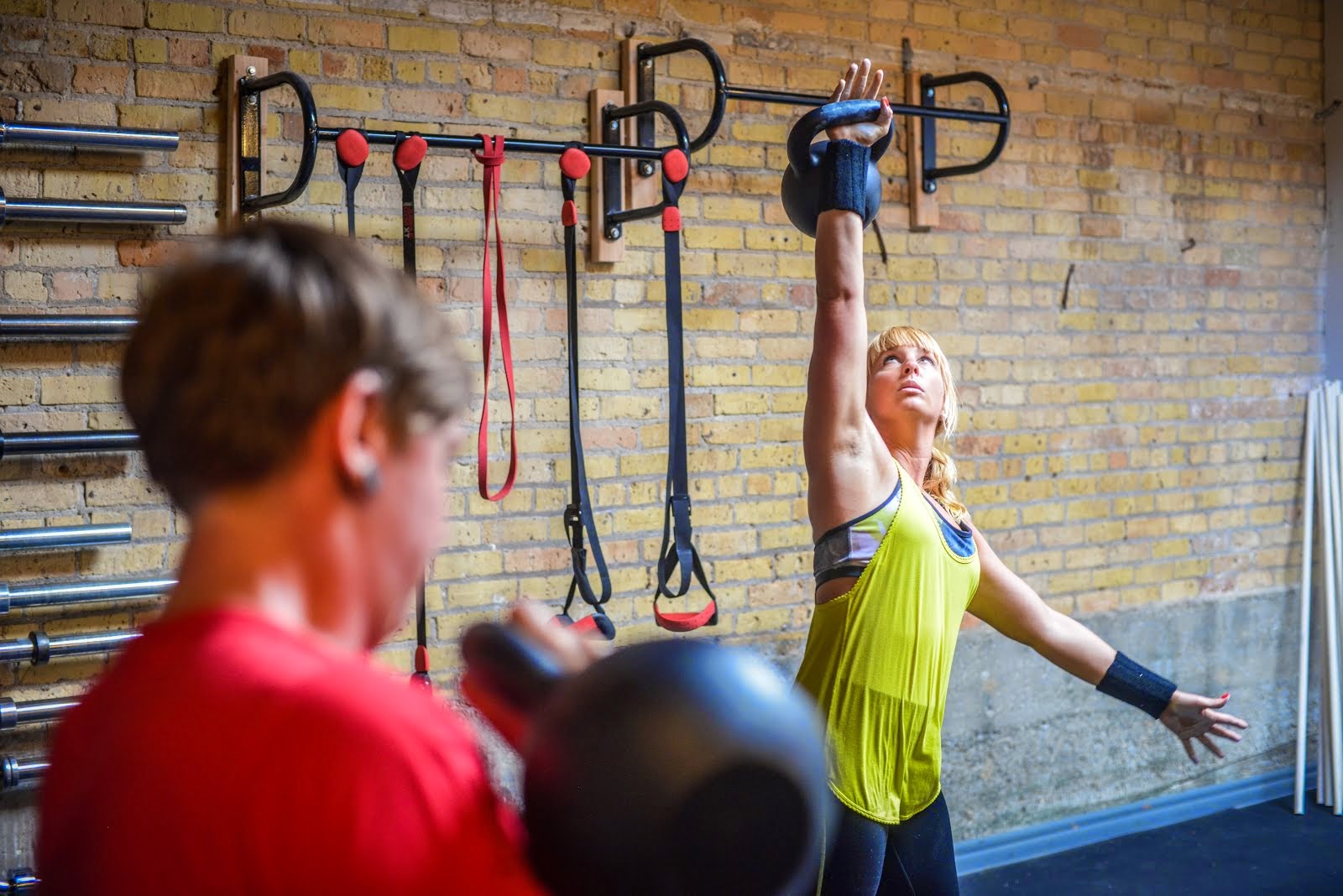Everyone together: “Yeah you know me!”
For those of you who picked up on the 90s hip-hop reference with today’s blog post, congrats…you’re cool. For those of you who have no idea, well, I encourage you to open up Pandora, Spotify, Slacker, or whatever your music streaming service of choice and look up Naughty by Nature.
Replace GPP with OPP and set on repeat.
You’re welcome.
Not that I wouldn’t want to take a trip down nostalgia lane and partake in any candid discussion around 90s hip-hop and some of my favorite songs and artists/groups from back in the day1, but we’d be sitting here for awhile if we did and I know you have things to do.
So I’ll get right to the point. The catchy title 1) was a sneaky way to lure you in (gotcha) because, as it happens, 2) I’m going to be talking about steady state cardio today.
“Are you down with steady state cardio?” didn’t have quite the same vibe and pizzaz as the OPP reference. And besides, if I had started with that as my title most of you would have told me to GFY and clicked away.
I promise no more three-letter abbreviations from here on out.
All of this to say……
I’ve Been Re-Thinking My Stance on Steady State Cardio.
As in: I’m starting to include more of it into my own training (and I’m liking it).
https://www.youtube.com/watch?v=a1Y73sPHKxw
I’m sorry, but Dramatic Chipmunk never gets old.
Okay, “liking it” is a bit of a stretch. I like pizza. I like deadlifts. And hell, on occasion, I like getting a pedicure2 I don’t necessarily “like” doing steady state cardio, and often times would rather throw my face into a brick wall out of sheer boredom.
But I like what it’s been doing to my training as of late – especially in the weight room.
Funnily enough there was a time in my life where I averaged upwards of 15-20 miles PER WEEK of running. Not knowing any better I did it as a way to “build my legs” for baseball. All through high-school and college it wasn’t uncommon for me to go for 5-7 mile runs a handful of times per week to “flush the lactic acid out of my muscles”3 or to punish myself for a bad outing.
Baseball and performance aside, not surprisingly, I was always a skinny kid/athlete. I started lifting weights at a young age to help build my body. However that often played second fiddle to the amount of running I did. I even ran Cross Country one year in high school. I don’t like to talk about it. It was a dark time in my life.
Once I was done playing (competitive) baseball and my career in the fitness industry started to manifest, my goal(s) then switched to getting my bodyweight up to 200 lbs (from 170-175, 180 tops). It was around 2002 when I first started reading the likes of T-Nation and other various websites.
I started nixing the isolation, body-part splits, I started deadlifting and squatting more, I ate whole eggs, and I cut-down the amount of steady state cardio I performed.
Low and behold I gained 30 lbs in less than a year and hit the 200 lb mark.
The internet told me that if I wanted to get jacked I shouldn’t perform any steady state cardio. All I had to do was toss in some sprints here and there, maybe do a few Tabata’s (which weren’t really Tabata’s, mind you), and I’d get all the aerobic conditioning I’d ever need. And besides: who needs aerobic conditioning when all you want to do is lift some heavy ass weights!
It not so many words: you’d lose all your gainz if you even thought about going for a light jog. And you’d lose your dignity if you were caught wearing jogger shorts. It’s science.
It’s a trend we see often in the fitness industry. The pendulum on any given topic – whether it’s debating the efficacy and usefulness of steady state cardio, high-fat vs. low-fat diets, carbohydrates, CrossFit, high-bar vs. low-bar squatting, Paleo, gluten, full-body vs. body-part splits, or whether or not Tracy Anderson is more intelligent than a ham sandwich (<– she isn’t) – swings either too far to the left or too far to the right.
There never seems to be a lack of extremism. You’re either in or you’re out, there’s no middle ground.
Sadly, I’m not immune to falling into the same trap.
It’s been well over a decade since I’ve included any semblance of long(er) duration, steady-state cardio (which can be characterized as a form of GPP – General Physical Preparedness) into the mix. Partly due to personal preferences, and partly due to my own naivete (but really I can chalk it up to 100% stubbornness. I’ve always known better).
So by now you may be asking yourself “Seriously Tony, pedicures? Why the change of heart, Tony?”
The impetus came from two sources.
1. Alex Viada (and by extension his phenomenal book, The Hybrid Athlete).

2. The guy who writes my programs, Greg Robins, told me I have to do it.
To put it lightly, Alex Viada is a freak of nature. The man can deadlift AND squat over 700 lbs, AND he runs a sub five-minute mile, AND he competes in Ironman and Ultra Marathons.
I once parked in the furthest spot possible in a Trader Joe’s parking lot and thought I was the man.
Alex has spent years via trial and error (and even he’d admit it’s been mostly error) in honing the most ideal formula to be able to maintain (and even gain) strength while concurrently improving endurance capacity. Being a “Hybrid Athlete” is all about working hard, but being lazy.
“In other words, do as little as possible to attain the necessary result. Lift less often than a powerlifter, run less than a runner, bike less than a cyclist, swim less than a swimmer… the body has limited recovery, and will quickly become overwhelmed.
Isolate what is truly important in each type of training, focus on those areas, and do them well. Cut out the junk miles, cut out the gym pissing contests, be draconian in how you approach routines – take those articles with the “ten exercises you should be doing” and toss them in the trash. The more you want to do, the less you should be doing.”
To be fair: not everyone wants to do both. For most – myself included – I have NO desire to run a marathon or even a 5K for that matter.
But in recent months I have changed my tune with regards to how incorporating more steady state cardio can help in the weight room and improve my recovery and performance.
To quote Alex:
“Endurance exercise improves energy substrate utilization – being able to more efficiently mobilize and burn fat and glucose will of course improve performance over time (due to more economical usage of glucose and a greater amount of essentially unlimited fat stores to burn). In addition, improved perfusion not only aids in getting oxygen to the cells, but also improves the body’s ability to both buffer acid buildup from lactate metabolism.”
A less charitable explanation of things would be to say “stronger heart = better endurance = better blood flow = more efficient muscles = better utilization of fat and glucose for fuel.”
Also – and this can be considered the Coup de gras of the entire article – steady state cardio (GPP) can help improve recovery!

The key here is to NOT overdo it in terms of volume and to NOT be an asshat and turn something that’s supposed to be low-intensity endeavor into loaded Prowler sprints for AMRAP (or something equally as asshatedness).
If the goal is to improve work capacity (ability to do more work in a given time) it’s crucial to employ modalities that aid and promote general recovery which, as Alex notes, also create positive adaptations in “durability, energy stores, cardiac output and cardiac perfusion, and other general components of overall endurance that essentially provide the foundation for an athlete to train and compete for longer while recovering better.”
Long story short: going for an easy (heart rate of 120-140 BPM) 20-30 minute jog 1-3x per week isn’t going to negate your gainz. I’d make the argument it may help!
And this isn’t relegated to just jogging (something of which I’ve been doing lately). As an example Lisa and I went to Harvard Stadium yesterday to walk up and down the stairs. Nice and easy, nothing hardcore, and just enough to elevate my heart rate into “Zone 2.”
I got a good workout, and I know it’s not going to have any detrimental affects on my squat and deadlift session today.
Elliptical machine, rowing machine, Prowler, bike, a pool, it’s all fair game. Just don’t overdo it.
I implore you to not be so “shallow” in your thinking to OMIT an entire way of training – and something that could very well have a positive net effect on your overall performance in the weightroom and physique – just because some brocentric article told you that running is for pussies.
It took me a while to turn off the noise on my end, but I’m glad I finally did. In the long run (<– LOL, pun intended) it’s going to be for the best.
As an FYI
Alex Viada will be speaking at Cressey Sports Performance on Sunday, June 28th for a one-day workshop. Spots are still available and you can find out more information HERE.








.jpg)











